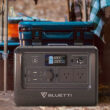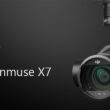Australian Drone Laws and Regulations
Over the years drone technology has gone through a lot of advancements from size and speed to affordability and how easy they are to control. This rise in consumer affordability has rapidly driven and pushed drone flying into a favourite past time. This increase in popularity and interest has also caused government agencies to scrutinise current laws, and regulations surrounding Remotely Piloted Aircraft (RPA). On the 29th September 2016, the Civil Aviation Safety Authority (CASA) amended the safety regulations for the operation of RPA’s (this included drones). These amendments created new classifications for drones. I’ve supplied the link here if you would like to visit CASA’s webpage to read the laws and regulations here.
The laws themselves are generally differentiated by the purpose of the flight. CASA's divides the laws by whether the flight is for recreational or commercial reasons, and even further specific to the weight of the RPA itself. Recreational flights are less restrictive not requiring any certification as long as you follow the safety rules. These are:
- Only flying during the day, without flying through fog or cloud.
- You need to be able to see the drone with your own eyes, not via FPV goggles or with a telescope and ascertain the orientation of the drone at all times.
- If using FPV goggles, you must also have a spotter with you at all times.
- You must not fly within 30 metres of people or over populated areas (in case of drone failure).
- You must not fly over 120 metres high as that is commercial airspace.
- Do not fly in a manner that is hazardous to other aircraft, which includes flying within 5km of any airfields, aerodromes and helicopter landing sites. CASA has made an app to check if you can fly in any given location which you can find here.You must not operate a drone within a restricted or prohibited area unless permission is given by the authority governing the airspace.
- You must not operate a drone within a restricted or prohibited area unless permission is given by the authority governing the airspace.
Additionally, when wanting to fly in or near a park or national park always research the operating regulations for that park as in some states piloting an RPA in a national park is allowed but not all so always research the location before the flight. You are also not allowed to pilot an RPA near an emergency situation whether it be a traffic accident or bushfire it is not allowed.
Commercial Usage for Drones
Commercial usage of an RPA requires that you still follow all the safety regulations detailed above, they do however have a few extra requirements and regulations. You will need to register with CASA for an Aviation Reference Number (ARN) before performing any commercial flights. RPA’s that are under 2kg in weight are free to use for commercial purposes without an RPA operator's certificate (ROC), or a remote pilot licence (RePL) however any over that weight limit will require these certifications. You also need to notify CASA 5 business days before any commercial flight which can be done using your ARN on their website.
If you want to learn more about the Civil Aviation Safety Regulations Part 101, CASA have an eLearning module you can do online which you can find here.










